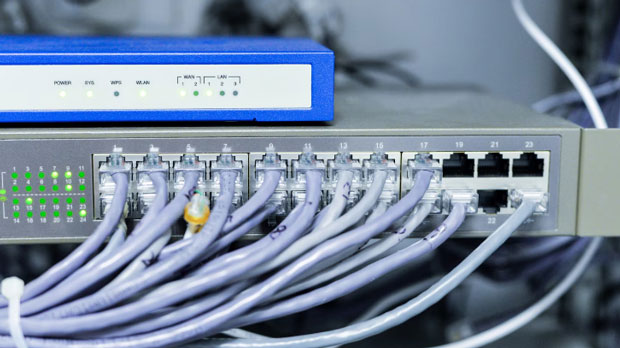In today’s digital landscape, social media marketing has become an essential tool for businesses to engage with their audience, increase brand visibility, and drive sales. However, marketers often face challenges like geographical restrictions, account bans, and limited reach, all of which can hinder their efforts. One effective way to tackle these challenges and improve social media marketing performance is by using residential socks5 proxies. These proxies can provide marketers with the anonymity, flexibility, and scalability needed to optimize their social media strategies, overcome limitations, and achieve better results. In this article, we will explore how residential Socks5 proxies can be leveraged to enhance social media marketing campaigns, allowing businesses to gain a competitive edge. What are Residential Socks5 Proxies?Before diving into their applications, it's essential to understand what residential Socks5 proxies are. A proxy server acts as an intermediary between a user’s device and the internet. It allows users to connect to the web through a different IP address, providing a layer of anonymity and security. Specifically, Socks5 proxies are a type of proxy that allows for the handling of a variety of internet protocols, including HTTP and FTP, with greater speed and flexibility than traditional proxies. Residential Socks5 proxies are distinct in that they route internet traffic through real residential IP addresses. These IPs are assigned to actual home users, making them appear more legitimate and harder to detect than datacenter proxies. This makes them a powerful tool for social media marketers who need to avoid detection while conducting their online activities, including managing multiple accounts and engaging with global audiences.Benefits of Using Residential Socks5 Proxies for Social Media Marketing1. Enhanced Privacy and AnonymityOne of the main advantages of using residential Socks5 proxies is the ability to maintain privacy and anonymity. Social media platforms often track user activity based on IP addresses, and excessive actions from a single IP can trigger red flags, leading to account suspensions or bans. By using a different residential IP address each time, marketers can avoid detection, allowing them to perform tasks such as account management, scraping data, and posting content without drawing attention.2. Bypass Geographical RestrictionsSocial media platforms sometimes impose geographical restrictions on content, or certain content might be only available in specific regions. For marketers aiming to reach a global audience, bypassing these geo-blocks is crucial. Residential Socks5 proxies enable users to appear as though they are browsing from various locations around the world. This makes it possible to access region-restricted content, engage with international audiences, and run localized campaigns without limitations.3. Reduced Risk of Account BansMany social media platforms have strict policies regarding account behavior. For instance, creating multiple accounts from the same IP or engaging in excessive automated actions can result in bans. Residential Socks5 proxies offer a solution by providing diverse IP addresses that simulate legitimate user behavior. This greatly reduces the likelihood of accounts being flagged or banned, making it a safer way to scale up social media marketing efforts.4. Improved Success Rate for Social Media CampaignsRunning social media campaigns often requires accessing different accounts, interacting with users, posting content, and scraping competitor data. Using a single IP address for all these tasks can lead to slower performance or blocked accounts. With residential Socks5 proxies, marketers can distribute their activities across different IP addresses, improving efficiency and success rates. This allows for more seamless automation and higher engagement on posts.5. Enhanced Scraping CapabilitiesData scraping is an essential technique for understanding audience behavior, monitoring competitors, and gaining insights into trending topics. However, social media sites often limit access or block users attempting to scrape large amounts of data. Residential Socks5 proxies allow marketers to circumvent these restrictions by rotating IP addresses and mimicking the behavior of real users. This improves the effectiveness of data scraping activities and helps businesses gather more valuable insights for their marketing strategies.How to Effectively Use Residential Socks5 Proxies for Social Media Marketing1. Managing Multiple AccountsA common tactic in social media marketing is to operate several accounts for different purposes, whether it’s for testing, niche campaigns, or customer support. However, managing multiple accounts from the same IP address often leads to account suspensions. Residential Socks5 proxies can be used to assign a unique IP address to each account, ensuring that actions taken on one account do not impact others. This method is particularly beneficial for businesses that need to scale up their social media marketing efforts without running the risk of having accounts banned.2. Running Location-Specific CampaignsTo effectively target users in specific regions, marketers need to engage with them from local IP addresses. Residential Socks5 proxies allow users to select IP addresses from specific geographic locations, which makes it possible to run location-targeted ads and campaigns. This helps businesses reach their target audience more effectively and boosts the relevance of their messaging.3. Automating Social Media TasksAutomating tasks such as liking, commenting, following, and posting is a common strategy for improving engagement on social media. However, automation without caution can result in being flagged by social media platforms. By using residential Socks5 proxies, marketers can spread their activities across different IP addresses, mimicking human behavior, and reducing the chances of their automated actions being detected. This allows for more effective and less risky automation.4. Protecting Your Brand’s ReputationA negative reputation on social media can significantly impact a brand's success. By using residential Socks5 proxies, businesses can protect their reputation by ensuring that their activities appear natural and are less likely to be flagged or penalized by social media platforms. This is especially important when dealing with reputation management, responding to customer feedback, or engaging in crisis communication.Challenges and ConsiderationsWhile residential Socks5 proxies offer numerous benefits for social media marketing, there are a few considerations to keep in mind. First, it’s important to understand the legal and ethical guidelines around proxy use in marketing. Ensure that the tactics being employed align with the terms and conditions of the social media platforms you are engaging with. Second, proxy performance can vary based on the provider and the number of users sharing the IP pool. Marketers should choose a reliable provider to ensure speed, reliability, and scalability.ConclusionIncorporating residential Socks5 proxies into your social media marketing strategy can significantly enhance the effectiveness of your campaigns. From improving privacy and bypassing geographical restrictions to reducing the risk of account bans and improving data scraping, these proxies offer a wide range of advantages that can help businesses maximize their social media presence. By leveraging the power of residential Socks5 proxies, marketers can stay ahead of the competition, enhance user engagement, and drive better results for their campaigns. However, it is crucial to approach proxy use responsibly, ensuring that your marketing activities remain compliant with platform rules and regulations.
Jan 14, 2025
![arrow]()



























































